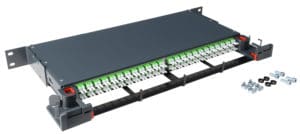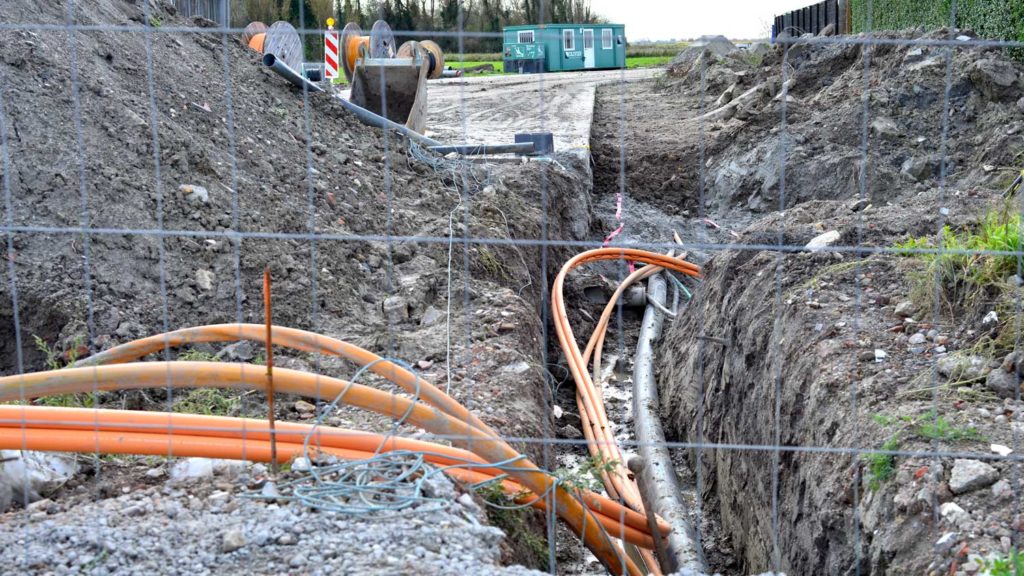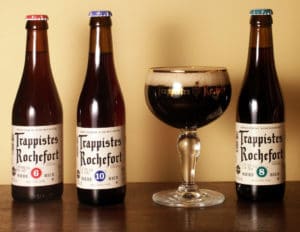Ultra-Rapid Network Expansion
Full speed ahead for Belgium’s largest network operator. By the end of 2028, Proximus will be connecting more than 4.2 million households and companies to its ultra-high-speed fiber optic network. The PRIME-ODF platform from R&M is speeding up work in the field.

PRIME ODF components adapted for Proximus: Cable Termination Unit (left) and 1U Fiber Termination Panel with 48 LC Duplex ports.
The largest infrastructure project in decades on the Belgian telecommunications market started in mid-2020. And it is catapulting the entire country into the fiber optic era. Fiber to the Home and Fiber to the Business with Gigabit speeds for Internet access is soon to be the norm. The provider-neutral Proximus network will cover around 70 % of the country’s fiber optic supply. Proximus is even aiming to offer Fiber to the 5G antennas.
Traditionally a pioneer
The Belgian carrier is investing around three billion euros for this purpose. Half of the ambitious investment program should be implemented as early as 2025. «Belgium has always been a pioneer in creating high-speed networks,» Proximus Chief Technology Officer Geert Standaert is quoted as saying in a specialist article.
Fiber optic networks have been rolled out to the street cabinets before (Fiber to the Cabinet). With VDSL technology, Proximus got the most out of the copper-based last mile. To date, about 85 % of the market has been served with 30 Mbps and 50 % with an impressive 100 Mbps.
Diligent evaluation
The management approached the project with due diligence. Geert Standaert is quoted in the specialist article as follows: «A fiber optic access network is a completely different technology from the copper line we have been working with for some time. And that is why we had to seriously rethink our tools and processes.»
From the very beginning, it had to be ensured that the rollout could take place as quickly as possible. The numerous FTTH sections in the field had to be as easy to build, operate and maintain as possible. Proximus assumes that the fiber optic cabling can be adapted to all the special features to be found locally: the types and sizes of residential units, distribution rooms, channels, shafts, and cabinets.
Price/performance ratio
A project group was given the task of evaluating a high-density platform for main distribution frames that could be used to build a future-proof FTTH network. The key was to find a panel that could accommodate the highest possible number of fibers per rack unit and still remain operable. Some important points for the specification were:
- Costs: Which construction kit can we use to implement our plans most efficiently and cost-effectively? How high is the total cost of ownership?
- Density: How many cables per height unit fit into the rack? Can the mass of new cables be accommodated in existing rooms? Does the solution avoid or minimize additional space requirements?
- Future: Does the platform offer sufficient resources to be able to cover the coming demand for fiber optic cables for 5G antennas?
- Openness: Is the platform compatible with the modularity of the historical cables and does it also connect the new, specially developed feeder access cables with 192 fibers?
- Operation: Does the product support the operational requirements and familiar working methods out in the field? Are the connectors easy for the technicians to use? How can the fibers be spliced onto the drawers at high packing density?
Proximus found answers to these questions at the Congress of the FTTH Council in Amsterdam in 2019. That was where R&M’s fiber optic main distributor PRIME ODF was launched. It offered the highest cabling density on the smallest possible footprint. R&M demonstrated that PRIME components can be adapted to customer needs immediately.
This provided rapidly deployable, high-density 1U panels with 48 LC Duplex ports and Cable Termination Units (CTU). Seba Service in Mechelen, a certified R&M distributor, set up the logistics hub for flexible supply to the construction teams. And that is how Proximus found the solution they were looking for.

High-speed Fiber to the Home: Proximus wants to supply 70 % of Belgium’s households with fiber by 2028.
«The best solution for us»
Stephane Cambier was a member of the High-Density Distribution Frame project group, which evaluated a high-density platform for main distribution frames. He is Transmission Equipment Specialist Networking Engineering & Operations at Proximus and gave R&M an interview.
What did you like most about the PRIME ODF from R&M?
Technically speaking, PRIME doubles the cabling density compared to the old platforms. However, we have to accept that we now work with LC/APC connectors as opposed to SC/APC connectors. Part of the solution package is of course the support offered to us by Seba and R&M. We very clearly felt the willingness to convince Proximus that they had the best solution for our requirements.
Can you describe your experiences with the R&M team when it came to adapting the end products?
A standard product is very rarely something you can use as it comes. We have to take the past into account and each network operator has its own particularities. R&M understood that and was very flexible in fulfilling our requirements. Great customer support.
What are your teams in the field reporting back to you?
Well, there was some resistance at first. The practical-minded had reservations about the fiber density and the new way of handling the Cable Termination Unit. But after some laboratory tests and a pilot project, the new installation method was accepted.
For nine months now, we have seriously been putting the material to the test and have had very little negative feedback. That’s a good sign. Another plus point is that there were no delivery delays even during the most intense phase of the pandemic.
Monks now brewing with fiber optics
 The Belgian network operator Proximus uses a practical example to describe the benefits of ultra-fast fiber optic connections for small companies. The product concerned is beer – something very popular in Belgium.
The Belgian network operator Proximus uses a practical example to describe the benefits of ultra-fast fiber optic connections for small companies. The product concerned is beer – something very popular in Belgium.
The famous monastery brewery Notre Dame de St. Remy Rochefort has recently acquired a fiber optic connection. Now the master brewers can digitize their production processes. The brew kettles can be operated remotely and monitored in real-time thanks to state-of-the-art IT and stable fiber-optic signal transmission.
Abbot Gumer Santos appreciates the convenience. The brewery no longer needs to be manned around the clock but the monks can still ensure the quality of the beer. A smartphone app allows direct intervention in production. And this represents a considerable competitive advantage for the brewery.
 The Belgian network operator Proximus uses a practical example to describe the benefits of ultra-fast fiber optic connections for small companies. The product concerned is beer – something very popular in Belgium.
The Belgian network operator Proximus uses a practical example to describe the benefits of ultra-fast fiber optic connections for small companies. The product concerned is beer – something very popular in Belgium.


